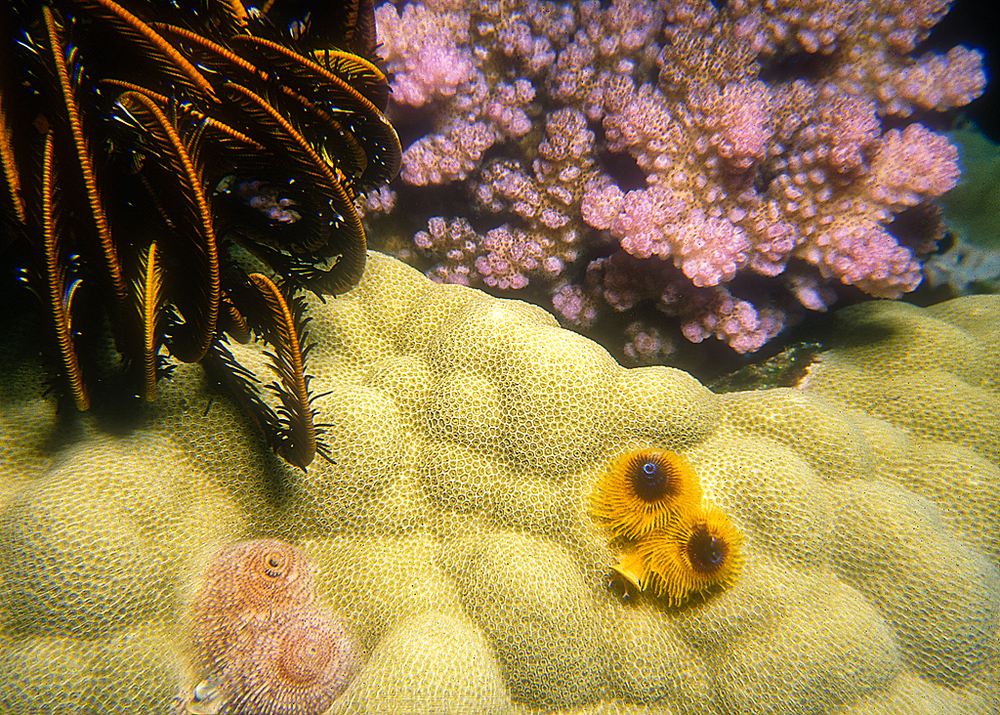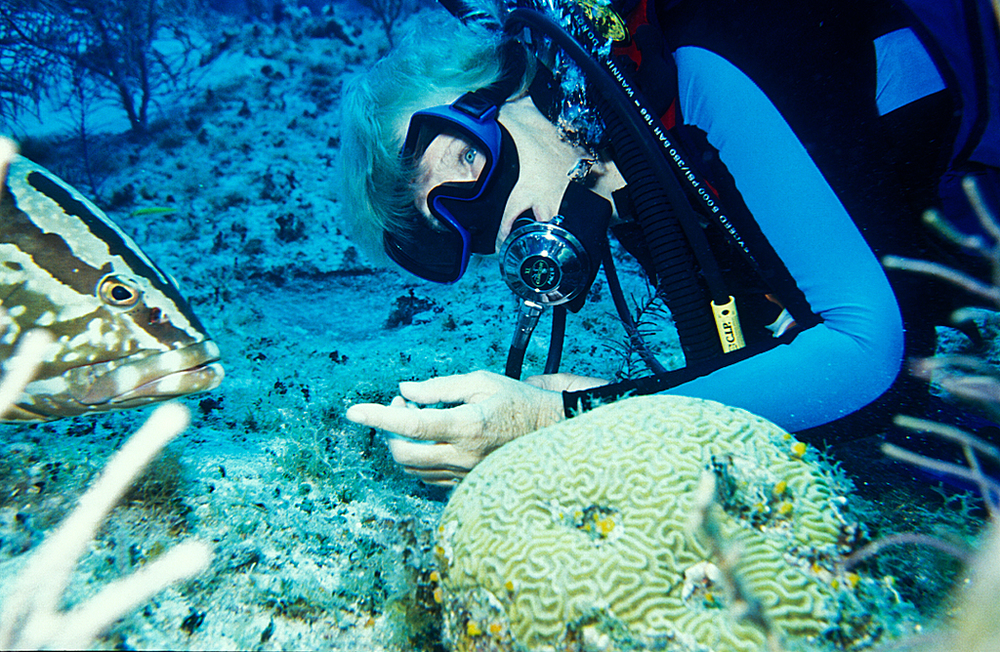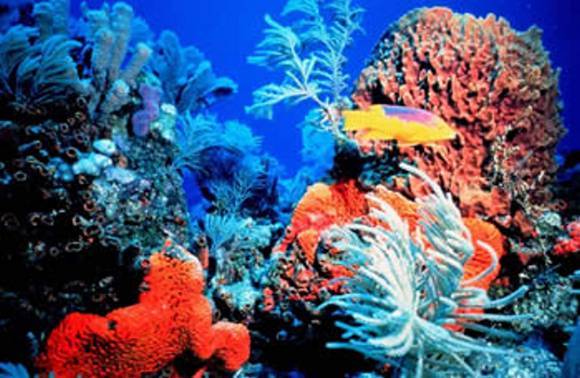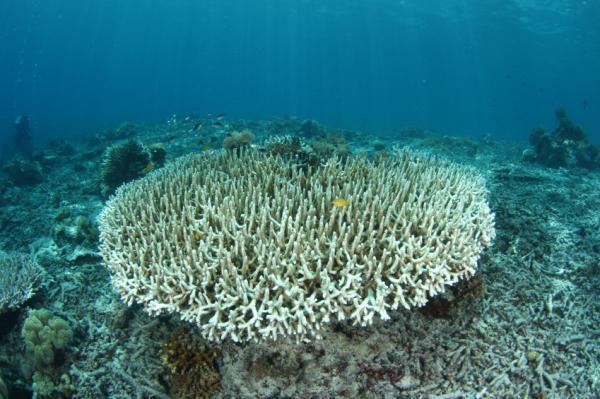Science & Governments Debate Doomed Future for Coral Reefs
/ Gorgonian soft corals on sea fan. Photographer Mary Lou Frost.Misguided Optimism for Coral Reefs
Gorgonian soft corals on sea fan. Photographer Mary Lou Frost.Misguided Optimism for Coral Reefs
Why are governments and environmentalists airbrushing the dire state of the world’s coral reefs, asks Roger Bradbury writing an op ed for the New York Times. Reality is that the world’s coral reefs — the nurseries of tropical coastal fish stocks — are zombie ecosystems, crushed under the weight of overfishing, ocean acidification and pollution.
In this hard-hitting argument, Bradbury says that “by persisting in the false belief that coral reefs have a future, we grossly misallocate the funds needed to cope with the fallout from their collapse.” He continues:
Money isn’t spent to study what to do after the reefs are gone — on what sort of ecosystems will replace coral reefs and what opportunities there will be to nudge these into providing people with food and other useful ecosystem products and services. Nor is money spent to preserve some of the genetic resources of coral reefs by transferring them into systems that are not coral reefs. And money isn’t spent to make the economic structural adjustment that communities and industries that depend on coral reefs urgently need. We have focused too much on the state of the reefs rather than the rate of the processes killing them.
2500 Year ‘Reef Hiatus’
Researchers at Florida Tech write that coral reefs might be undergoing a total collapse similar to a “reef hiatus” that began 4,000 years ago and lasted for 2,500 years.
Doctoral student Lauren Toth led the study which drove 17-foot, small-bore aluminum pipes deep into coral reefs along the Pacific coast of Panama. Extracting cross-sections from the reefs, Toth reconstructed a timeline of the reef’s history.
We were shocked to find that 2,500 years of reef growth were missing from the frameworks,” Toth said in a release. “That gap represents the collapse of reef ecosystems for 40 percent of their total history.
In this case, the researchers take the same optimistic view that Bradbury condemns as unrealistic, saying:
… if Pacific reefs were able to recover after a millennial-scale hiatus in coral growth, and if current trends in CO2 emissions can be stopped or reversed, reefs of the future might also prove resilient.
“This is not the time to give up and say it’s all over,” said study co-author Richard Aronson, a biology professor at Florida Tech.
 Asia Pacific coral garden by Mary Lou FrostFrozen Sperm Are Coral Lifeline
Asia Pacific coral garden by Mary Lou FrostFrozen Sperm Are Coral Lifeline
Shortly after the Bradbury challenge on the false optimism of coral reef science, the New York Times highlighed Dr. Mary Hagedorn’s work as a reproductive physiologist working at Hawaii’s Institute of Marine Biology.
Dr. Hagedorn is building a sperm back for the world’s corals in the hope that they could be used in the future to restore and rebuild damaged reefs.
She estimates that she has frozen one trillion coral sperm, enough to fertilize 500 million to one billion eggs. In addition, there are three billion frozen embryonic cells; some have characteristics of , meaning they may have the potential to grow into adult corals.
Her collection is tiny, given the biodiversity of coral reef species. But her approach is unique and probably represents the kind of research efforts that Bradbury claims is needed.
Just 27 percent of the world’s coral reefs lie in preserved areas where enforcement is spotty. And Dr. Hagedorn struggles to raise runding when conservationists are more focused on preservation.
Her read Frozen Sperm Offer a Lifeline for Coral is fascinating because it reminds us that nature is sexual in its need to reproduce.
In 2009, JoGayle Howard, a National Zoo researcher known as the “sperm queen,” produced healthy black-footed ferret kits by inseminating a female ferret with sperm collected and frozen more than 20 years earlier, adding valuable genetic diversity to the endangered species. Dr. Howard, who died in 2011, remains an inspiration to Dr. Hagedorn: When her work is interrupted by tropical weather or the vagaries of coral spawns, she likes to remember that even one vial of frozen sperm could be worth all the trouble.
“Think about the black-footed ferret,” she said. “Just a few individuals can get a population started again.”
 Marine life photographer Mary Lou FrostPhotographer Mary Lou Frost spends her days photographing coal reefs and marine life in an effort to raise awareness about this perilous global situation that we impact the interconnected food supply ecosystem in incalculable ways.
Marine life photographer Mary Lou FrostPhotographer Mary Lou Frost spends her days photographing coal reefs and marine life in an effort to raise awareness about this perilous global situation that we impact the interconnected food supply ecosystem in incalculable ways.
More reading on coral reefs:
Ready for Coral Reef Defeat, Scientists Suggest Storing Species for Future



